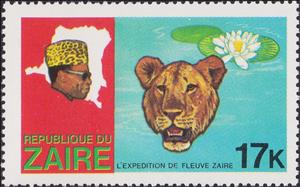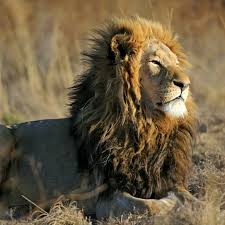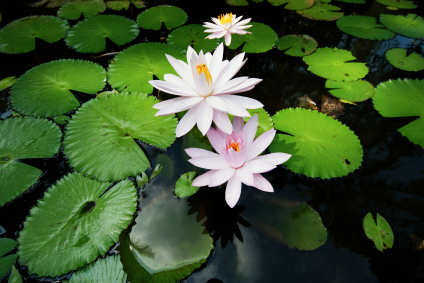Stamp: Lion (Panthera leo), Water Lily (Zaire 1979)
Lion (Panthera leo), Water Lily (Zaire 1979)
12 February (Zaire ) within release Discovery of the River Zaïre goes into circulation Stamp Lion (Panthera leo), Water Lily face value 17 Zairean makuta
| Stamp Lion (Panthera leo), Water Lily in catalogues | |
|---|---|
| Michel: | Mi:CD 594 |
| Stamp Number: | Sn:CD 907 |
| Yvert et Tellier: | Yt:CD 931 |
| Belgium: | Bel:CD 972 |
Stamp is horizontal format.
female lions head and water lilyAlso in the issue Discovery of the River Zaïre:
- Souvenir Sheet - Expedition On River Zaire face value 18;
- Souvenir Sheet - The voyage of discovery of the River Zaïre face value 106;
- Stamp - Ntore-dancer face value 1;
- Stamp - Regal Sunbird (Nectarinia regia) face value 3;
- Stamp - African Elephant (Loxodonta africana) face value 4;
- Stamp - Diamond, cotton & tobacco face value 10;
- Stamp - Hand with torch face value 14;
- Stamp - Lion (Panthera leo), Water Lily face value 17;
- Stamp - Waterfalls of Inzia face value 25;
- Stamp - Fishermen of Wagenia face value 50;
- Stamp - African Elephant (Loxodonta africana) face value 4;
- Stamp - Diamond, cotton & tobacco face value 10;
- Stamp - Fishermen of Wagenia face value 50;
- Stamp - Hand with torch face value 14;
- Stamp - Lion (Panthera leo), Water Lily face value 17;
- Stamp - Regal Sunbird (Nectarinia regia) face value 3;
- Stamp - Waterfalls of Inzia face value 25;
- Souvenir Sheet - Expedition On River Zaire face value 18;
|
Data entry completed
83%
|
|
|---|---|
| Stamp Lion (Panthera leo), Water Lily in digits | |
| Country: | Zaire |
| Date: | 1979-02-12 |
| Size: | 52 x 33 |
| Perforation: | 14 |
| Format: | Stamp |
| Face Value: | 17 Zairean makuta |
Stamp Lion (Panthera leo), Water Lily it reflects the thematic directions:
A head of state (or chief of state) is the public persona that officially represents the national unity and legitimacy of a sovereign state. In some countries, the head of state is a ceremonial figurehead with limited or no executive power, while in others, the head of state is also the head of government. In countries with parliamentary governments, the head of state is typically a ceremonial figurehead that does not actually guide day-to-day government activities and may not be empowered to exercise any kind of secular political authority (e.g., Queen Elizabeth II as Head of the Commonwealth). In countries where the head of state is also the head of government, the president serves as both a public figurehead and the actual highest ranking political leader who oversees the executive branch (e.g., the President of the United States).
A flower, sometimes known as a bloom or blossom, is the reproductive structure found in plants that are floral (plants of the division Magnoliophyta, also called angiosperms). The biological function of a flower is to effect reproduction, usually by providing a mechanism for the union of sperm with eggs. Flowers may facilitate outcrossing (fusion of sperm and eggs from different individuals in a population) or allow selfing (fusion of sperm and egg from the same flower). Some flowers produce diaspores without fertilization (parthenocarpy). Flowers contain sporangia and are the site where gametophytes develop. Many flowers have evolved to be attractive to animals, so as to cause them to be vectors for the transfer of pollen. After fertilization, the ovary of the flower develops into fruit containing seeds. In addition to facilitating the reproduction of flowering plants, flowers have long been admired and used by humans to beautify their environment, and also as objects of romance, ritual, religion, medicine and as a source of food.
Mammals are any vertebrates within the class Mammalia (/məˈmeɪli.ə/ from Latin mamma "breast"), a clade of endothermic amniotes distinguished from reptiles (including birds) by the possession of a neocortex (a region of the brain), hair, three middle ear bones and mammary glands. All female mammals nurse their young with milk, secreted from the mammary glands. Mammals include the largest animals on the planet, the great whales. The basic body type is a terrestrial quadruped, but some mammals are adapted for life at sea, in the air, in trees, underground or on two legs. The largest group of mammals, the placentals, have a placenta, which enables the feeding of the fetus during gestation. Mammals range in size from the 30–40 mm (1.2–1.6 in) bumblebee bat to the 30-meter (98 ft) blue whale. With the exception of the five species of monotreme (egg-laying mammals), all modern mammals give birth to live young. Most mammals, including the six most species-rich orders, belong to the placental group. The largest orders are the rodents, bats and Soricomorpha (shrews and allies). The next three biggest orders, depending on the biological classification scheme used, are the Primates (apes and monkeys), the Cetartiodactyla (whales and even-toed ungulates), and the Carnivora (cats, dogs, seals, and allies).
Лев (Panthera leo) — крупный представитель семейства кошачьих рода Panthera, обитающий в странах Африки к югу от Сахары и Индии. У него мускулистое тело с широкой грудью, короткая округлая голова, круглые уши и тёмный пучок волос на кончике хвоста. У него ярко выражен половой диморфизм: взрослые самцы крупнее самок и имеют густую гриву. Это социальный вид, образующий группы, называемые прайдами. Львиный прайд состоит из нескольких взрослых самцов, родственных самок и детёнышей. Группы львиц обычно охотятся вместе, охотясь в основном на средних и крупных копытных. Лев — высший и ключевой хищник.
Animals are multicellular, eukaryotic organisms of the kingdom Animalia (also called Metazoa). All animals are motile, meaning they can move spontaneously and independently, at some point in their lives. Their body plan eventually becomes fixed as they develop, although some undergo a process of metamorphosis later on in their lives. All animals are heterotrophs: they must ingest other organisms or their products for sustenance.
Flora is the plant life occurring in a particular region or time, generally the naturally occurring or indigenous—native plant life. The corresponding term for animal life is fauna. Flora, fauna and other forms of life such as fungi are collectively referred to as biota. Sometimes bacteria and fungi are also referred to as flora, as in the terms gut flora or skin flora.
Aquatic plants are plants that have adapted to living in aquatic environments (saltwater or freshwater). They are also referred to as hydrophytes or macrophytes. These plants require special adaptations for living submerged in water, or at the water's surface. The most common adaptation is aerenchyma, but floating leaves and finely dissected leaves are also common.
The principal factor controlling the distribution of aquatic plants is the depth and duration of flooding. However, other factors may also control their distribution, abundance, and growth form, including nutrients, disturbance from waves, grazing, and salinity.
Aquatic vascular plants have originated on multiple occasions in different plant families; they can be ferns or angiosperms (including both monocots and dicots). Seaweeds are not vascular plants; rather they are multicellular marine algae, and therefore are not typically included among aquatic plants. A few aquatic plants are able to survive in brackish, saline, and salt water. Examples are found in genera such as Thalassia and Zostera. Although most aquatic plants can reproduce by flowering and setting seed, many also have extensive asexual reproduction by means of rhizomes, turions, and fragments in general.
One of the largest aquatic plants in the world is the Amazon water lily; one of the smallest is the minute duckweed. Many small aquatic animals use plants like duckweed for a home, or for protection from predators, but areas with more vegetation are likely to have more predators. Some other familiar examples of aquatic plants might include floating heart, water lily, lotus, and water hyacinth.
Some aquatic plants are used by humans as a food source. Examples include wild rice (Zizania), water caltrop (Trapa natans), Chinese water chestnut (Eleocharis dulcis), Indian lotus (Nelumbo nucifera), water spinach (Ipomoea aquatica), and watercress (Rorippa nasturtium-aquaticum).







